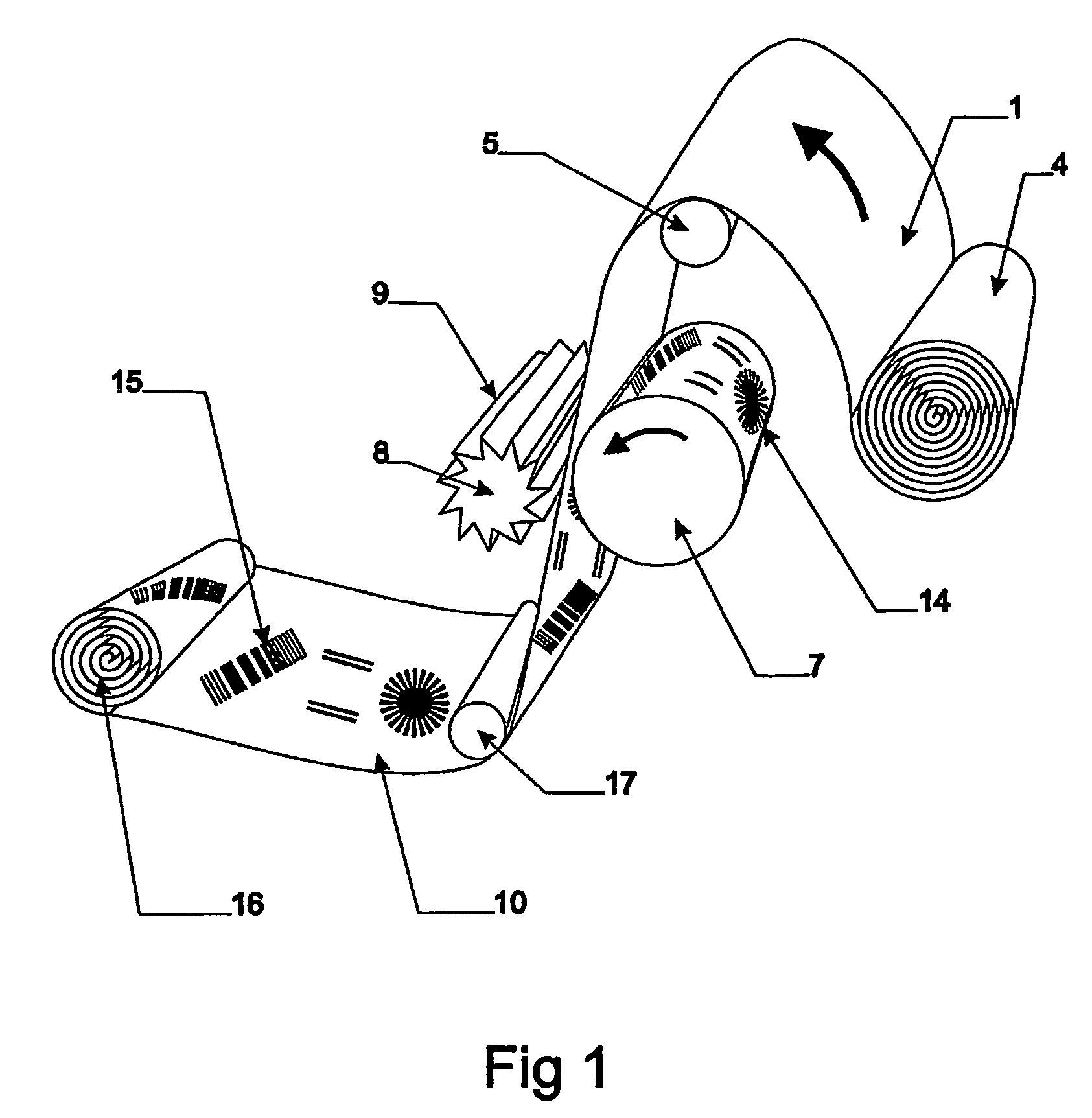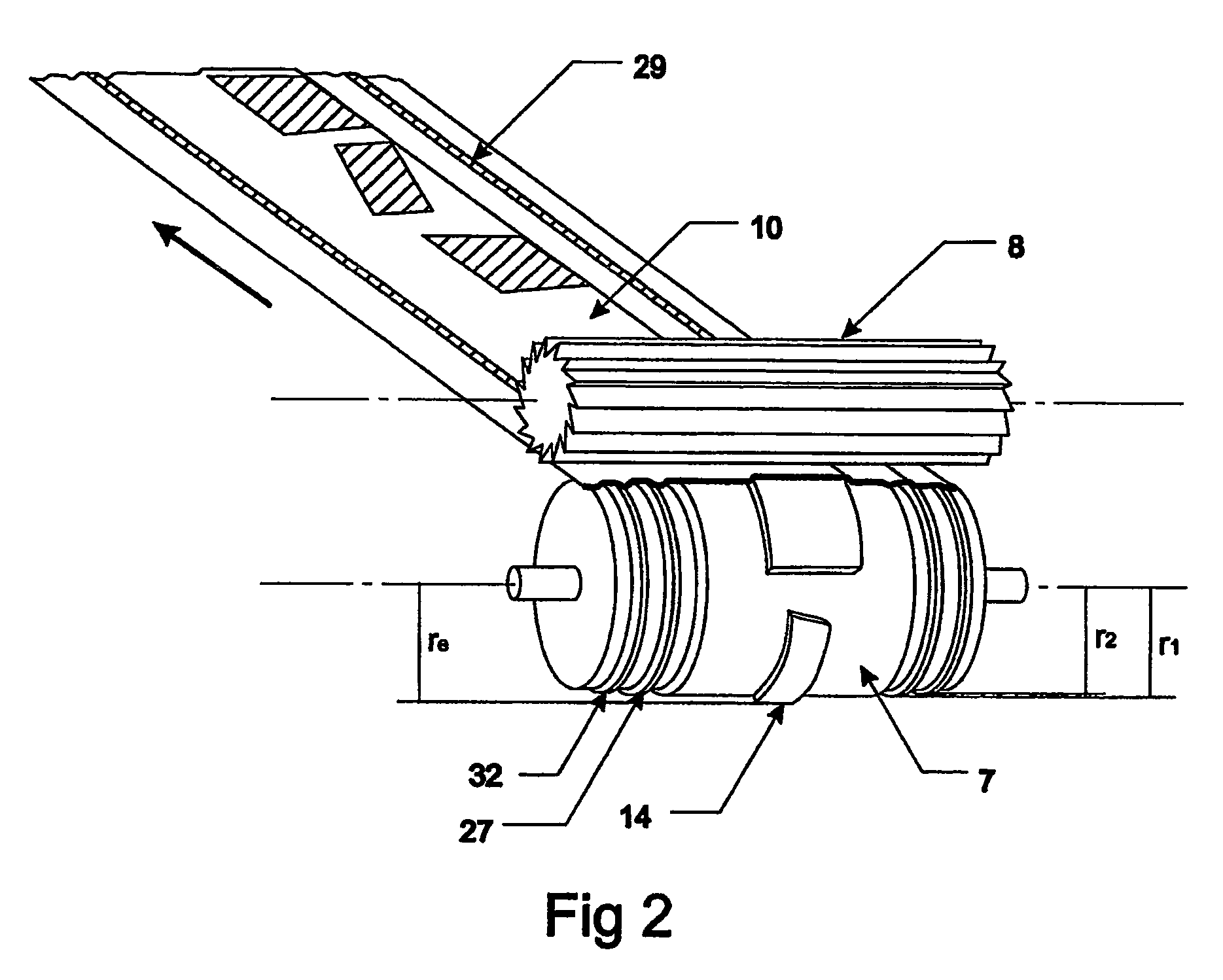Methods and devices for manufacturing of electrical components and laminated structures
a manufacturing method and technology for laminated structures, applied in lamination, weaving, woven fabrics, etc., can solve the problems of high environmental load, unsufficient etching, and high risk of waste management problems of chemical substances employed
- Summary
- Abstract
- Description
- Claims
- Application Information
AI Technical Summary
Benefits of technology
Problems solved by technology
Method used
Image
Examples
Embodiment Construction
[0032]Referring first to FIGS. 1, 2 and 4 a continuous web 1 consisting of at least one layer 2 of a conducting material, e.g. metal or metal alloy or conducting polymer, and a flexible backing or carrier layer 3 of dielectric material is fed from a supply roll 4, via a support roll 5 to a nip 6. The layer 2 of conducting material is preferably a continuous layer, but it can also be a discontinuous layer consisting of two or more parallel strips oriented in the feeding direction of the web. It is also possible to arrange the layer 2 as discrete areas of conducting material. The backing 3, preferably a plastic (PET) foil or paper, has a more or less consistent thickness t, while the conducting layer 2 may be varying in thickness. The gauges of the different layers are varying, the conducting layer being <1 mm and the backing layer (t) being <1 mm. As will be recognized by a man skilled in the art discrete sheets fed from a supply or storage (not illustrated) may be used instead of sa...
PUM
| Property | Measurement | Unit |
|---|---|---|
| flexible | aaaaa | aaaaa |
| conducting | aaaaa | aaaaa |
| velocity | aaaaa | aaaaa |
Abstract
Description
Claims
Application Information
 Login to View More
Login to View More - R&D
- Intellectual Property
- Life Sciences
- Materials
- Tech Scout
- Unparalleled Data Quality
- Higher Quality Content
- 60% Fewer Hallucinations
Browse by: Latest US Patents, China's latest patents, Technical Efficacy Thesaurus, Application Domain, Technology Topic, Popular Technical Reports.
© 2025 PatSnap. All rights reserved.Legal|Privacy policy|Modern Slavery Act Transparency Statement|Sitemap|About US| Contact US: help@patsnap.com



